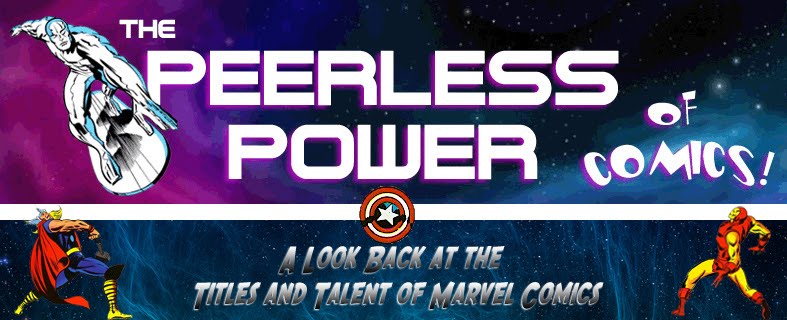During the extended storyline featuring Scourge--the anonymous killer who stalked and gunned down nearly thirty super-villains in a number of Marvel titles and capped each kill with the phrase, "Justice Is Served!"--there were arguably two aspects to his story that stood out for readers and made the character a fascinating one to watch. For one, the fact that he would appear so unexpectedly in a story to make his kill, his history and motivation completely unknown; and secondly, that there were likely a few of his victims that some readers perhaps didn't want to see meeting their end, for whatever reason. Of course, that last assertion works both ways--some of you no doubt didn't object at all at the removal of villains you regarded as uninspired or a waste of space.
In hindsight, then (the saga of Scourge was wrapped up over thirty years ago), a listing of Scourge's victims, courtesy of a handy reference list that was provided by Marvel in a letters page*, provides an opportunity to "check off" those characters you may have felt were too hastily dealt with at the barrel of Scourge's weapon. My own thoughts on the matter follow, but I'd also like to throw the floor open (heck, the floor is always open here, you know that!) and see which of the characters appealed to you and which you felt deserved to be taken off the Marvel map for good. (Probably the most gruesome forum to ever take place in the PPC. But apropos for Halloween, no?)
*Though not in response to a letter, it should be noted... this was at a time when book editors often crowded out actual letters with their own thoughts and addendums.
As to my own preferences, it's probably easier to list those villains I felt still had some life in them (so to speak), since I considered all of these characters to be expendable; in fact, I wouldn't have minded having Scourge add to the body count with a few other villains that, like Megatak and Jaguar, were in my opinion D.O.A. But a few on this list, handled by a good writer, might have gotten a new lease on life:
- The Melter - As ruthless as they come, which adds to his character much more than his actual power. (The original Frightful Four are probably remembered more for their ruthlessness and chemistry together than whatever abilities they wielded.) The Melter needed a better method of discharging his power than a hand-held gun or a chest emitter--but he's deadly and cocky, assets for any memorable villain.
- The Human Fly - The character initially came across as having a lot of thought put into both his appearance and his power, and I really enjoyed his origin story. I wouldn't want to see him as part of a group, but I'd definitely put him in the Vulture's league in terms of villainy and deadliness, if not staying power.
- Miracle Man - Granted, his story has probably run its course, his origin tale being given a generous follow-up. But if villains like Count Nefaria and the Wizard continue to rate mileage, the Miracle Man's ambition and villainous nature should be able to go the distance.
- Firebrand - Gary Gilbert's compelling quality has always been how misguided he became in his violent approach to dealing with the establishment; that, and his striking costume (I really liked the design of his chest symbol), gave a writer a good deal to work with.
The real controversy regarding the mission of Scourge would have been if he hadn't limited his targets to second-string (in some cases third-string) villains, and taken out three or four more prominent characters (e.g., the Wizard, or Nefaria, or Baron Mordo, or Zemo) who also could have been stalked and dealt with by a master of disguise. In any case, do feel free to share your thoughts on those who either made the list of dearly departed here, or other characters who you wouldn't have minded seeing tacked onto it. When it came to villains from the '80s, heaven knows Scourge had his work cut out for him.


















































